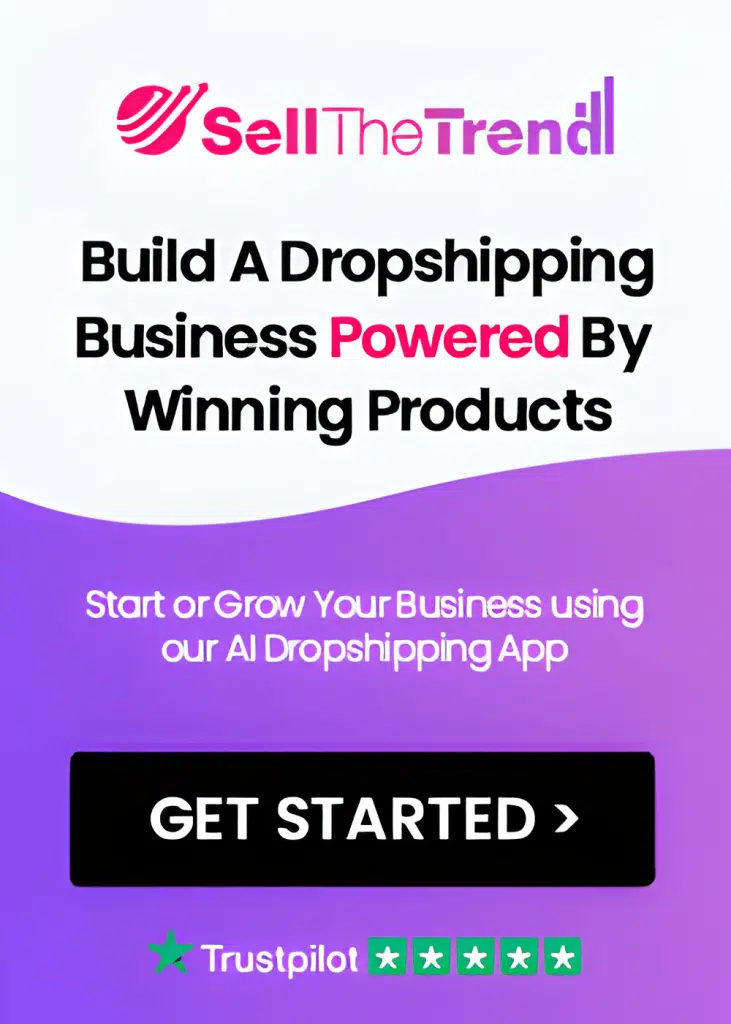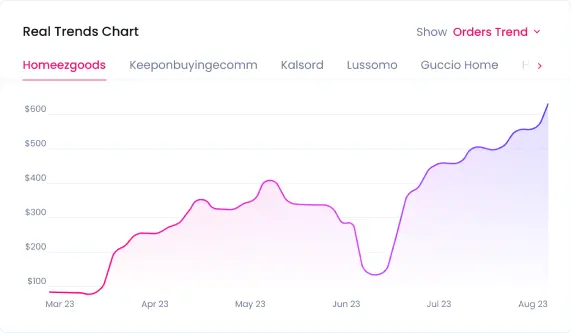How To Start a Dropshipping Business With No Money
Contents
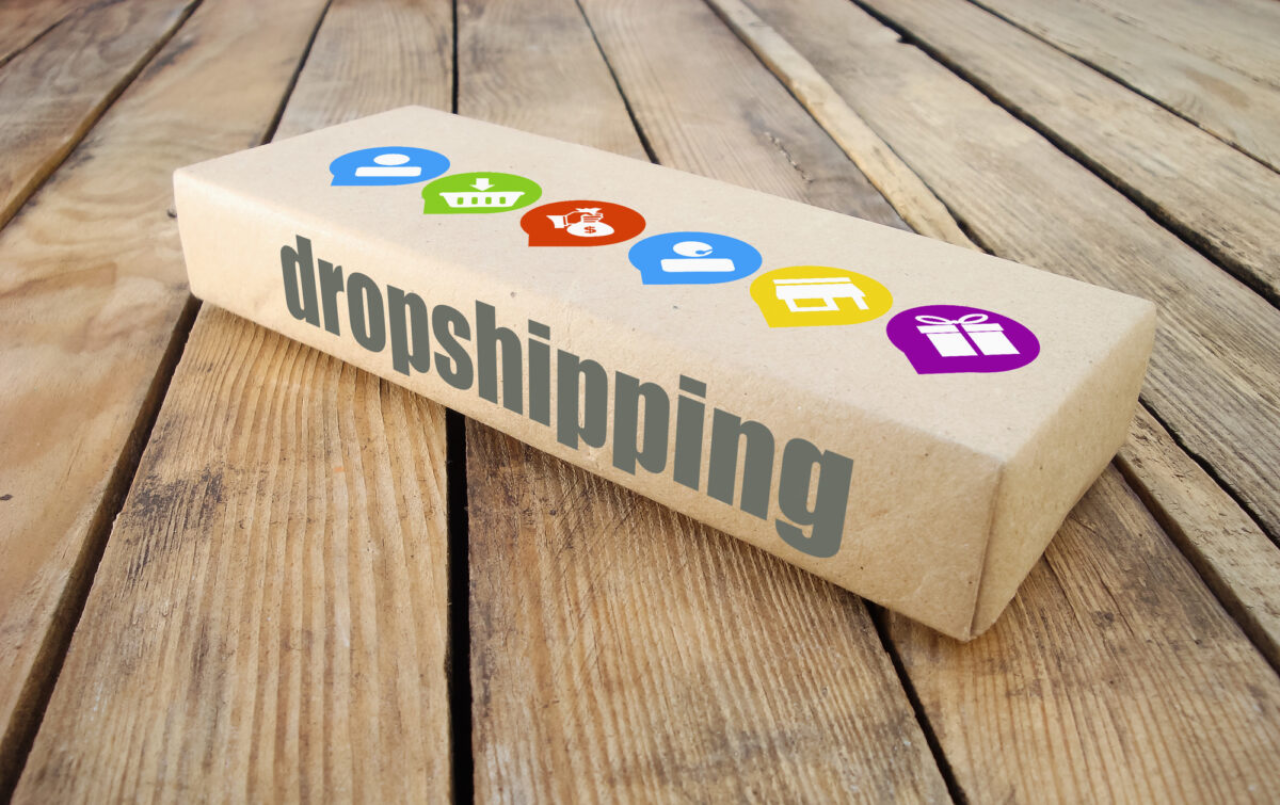
You’re probably wondering how to start a dropshipping business with no money, and it’s a common thought. We had the same question when we started out, unsure if it was even possible.
Back then, we used free tools, leveraged social media to get traffic, and worked hard on building relationships with suppliers.
The key is to start small, use available resources wisely, and stay persistent. In this guide, we’ll show you exactly how to follow this path and launch your dropshipping business without spending a single dollar.
Key Takeaways
- You can start a dropshipping business with no money by using free tools, free trials, and organic marketing strategies.
- Platforms like Sell The Trend help you find profitable niches and reliable suppliers without any upfront costs.
- Focus on providing excellent customer service and customer satisfaction to build customer loyalty and trust.
- Free marketing methods, like social media and email marketing, can drive traffic without using paid advertising.
- Use free resources and do your own market research to grow your dropshipping venture efficiently.
How Does The Dropshipping Business Model Work?
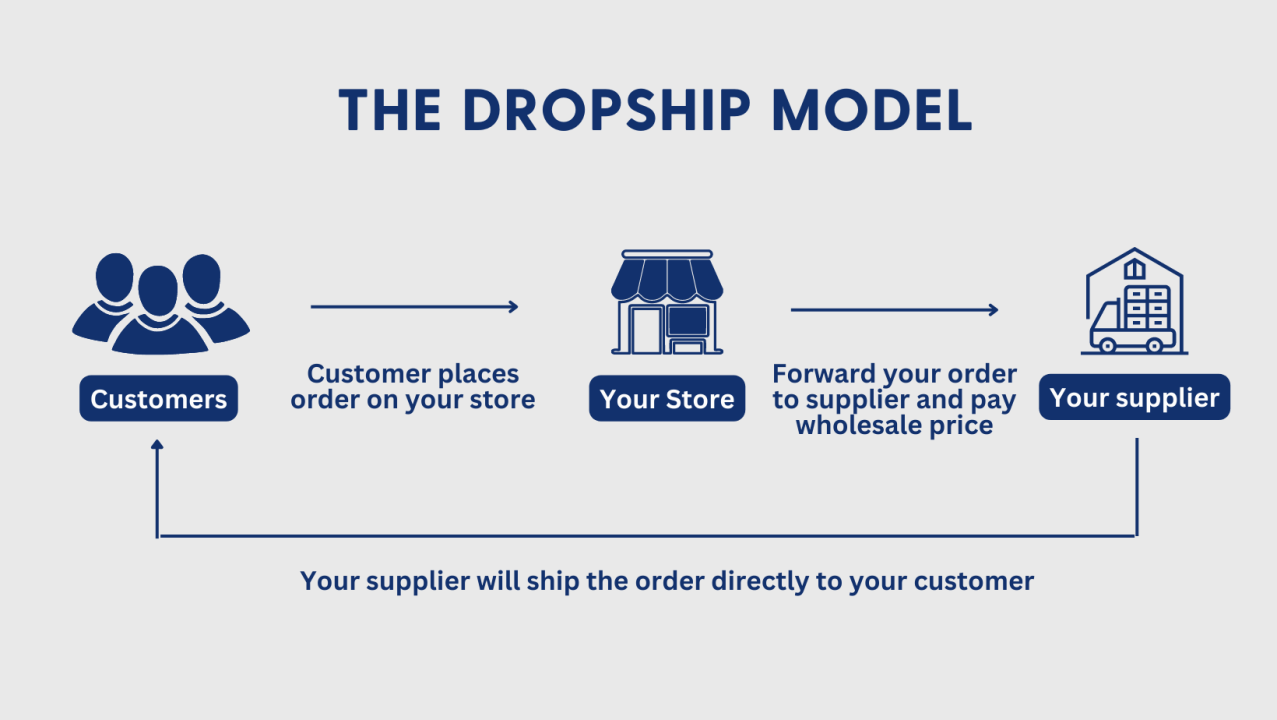
The dropshipping business model is simple. You set up an online store and list products for sale. But instead of keeping the items in stock, you only buy them when a customer places an order.
Here’s how it works:
- A customer buys a product from your store.
- You order the product from a supplier.
- The supplier ships it directly to the customer.
You don’t need to deal with inventory or shipping. We recommend finding reliable suppliers who can fulfill orders quickly, as this helps build trust with your customers. Your profit comes from the difference between what you charge and what you pay the supplier. It’s a great model to get started with minimal risk.
Why Consider Starting A Free Dropshipping Business?
We can tell you from experience—it’s one of the easiest ways to begin selling online with little to no upfront costs. You don’t need to buy stock, rent space, or worry about shipping. Everything happens after a customer places an order.
We recommend starting this way because it lowers your risk. You can test different products and markets without investing money first. You can explore various niches, from fashion to tech gadgets, and find what works best for your audience.
Plus, many free tools and platforms allow you to get started without spending a dime. This means you can focus on growing your business without financial pressure.
Here are some of the advantages of starting your own dropshipping business:
- Low risk: You don’t need to invest in inventory upfront.
- Easy to start: No need for a warehouse or shipping setup.
- Flexibility: You can run your business from anywhere with an internet connection.
- Test products easily: You can switch products or niches without losing money.
- No storage costs: Since you don’t hold stock, you avoid extra overhead costs.
How To Start Dropshipping With No Money?
Here’s how you can start a dropshipping store with no money and make it work:
1. Choose A Profitable Niche
The first step is finding a profitable niche—a specific category of products that people want to buy. You need to choose something that isn’t too crowded with competition but still has enough demand to make sales.
How do you find a profitable niche?
Start by using free tools like Google Trends to explore what’s popular. Go to Google Trends, enter a product idea (e.g., “LED dog collars”), and see how interest changes over time.
If the trend is going up or stable, it’s a good sign.
Take a look at the graph below for eco-friendly products.
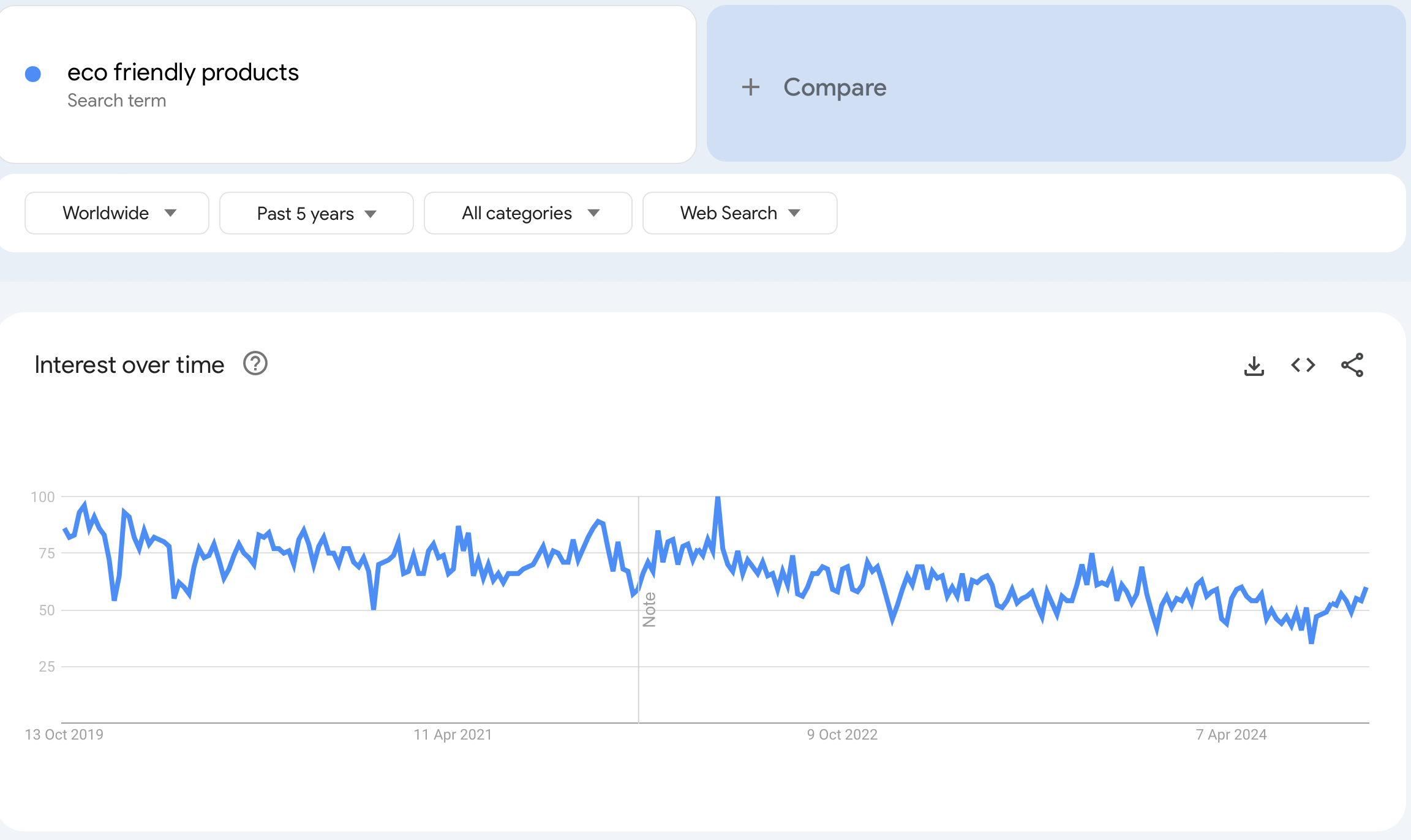
You can see that while there are small dips, the overall interest has stayed strong over the last few years. This suggests there’s steady demand, making it a solid niche to explore further.
You can also use social media platforms like Instagram or TikTok to see what’s trending. Check popular hashtags related to your idea and note the level of engagement—likes, shares, comments. If people are excited about the topic, it means there’s an audience.
Now here’s a trick to save time: Instead of hunting all over the place, we like using Sell The Trend. This tool shows trending products across platforms like AliExpress, Amazon, and Shopify.
Here’s how we can use Sell The Trend to help find a profitable niche for dropshipping:
Start by opening the tool as shown below.

At the top, there’s a search bar where you can type in any product or category you’re curious about. Maybe you’re interested in something like “home decor” or “beauty products.”
Just enter it there, and you’ll instantly get results from a huge database of trending products—22 million options, to be exact.
Once you’ve hit search, you can filter the results to make things easier. For example, when we looked under the Beautycategory, we found items like a Shiatsu Foot Massager and Eyelash Lengthening Serum, both with great sales stats and profit potential.
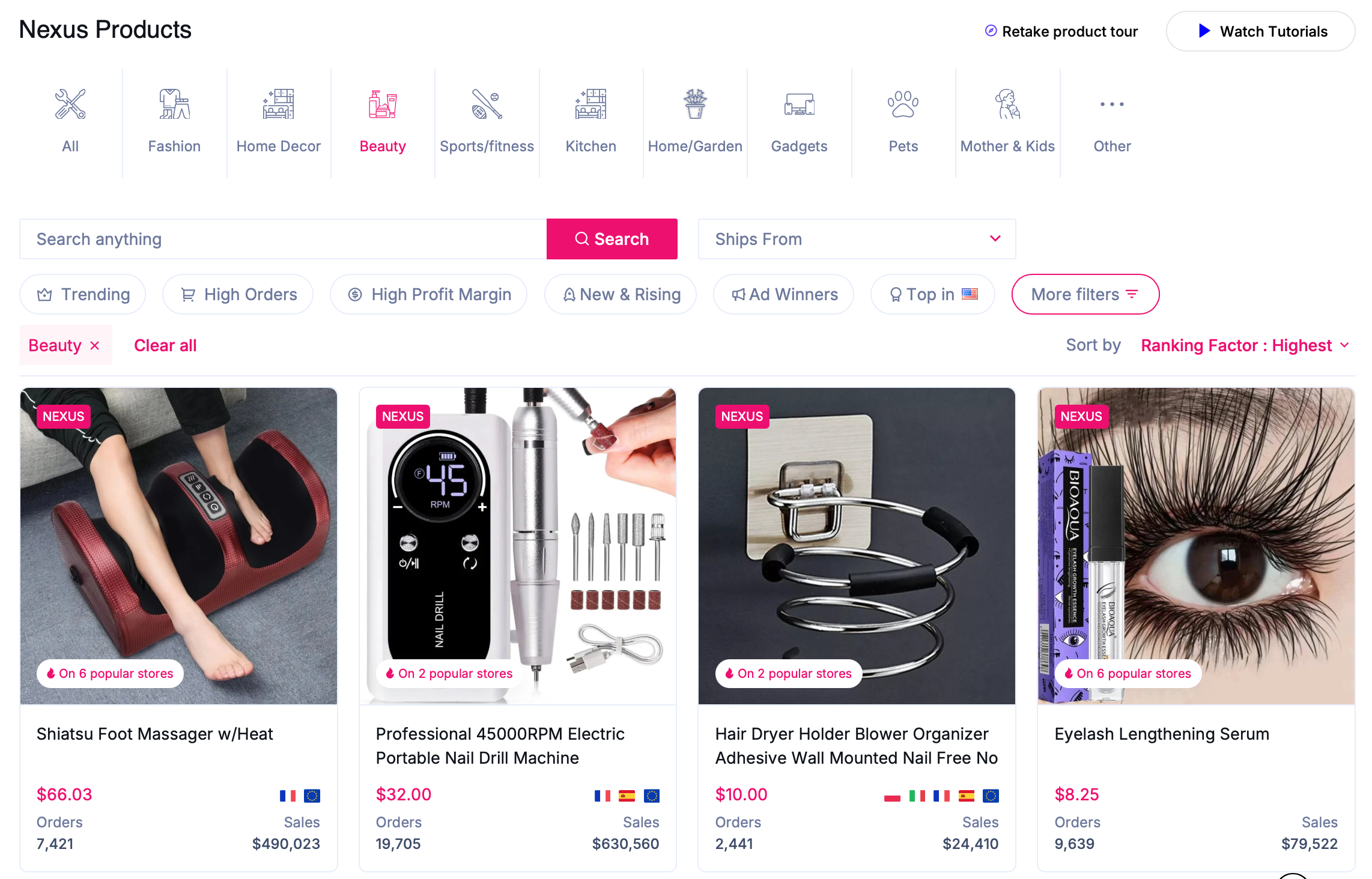
To dig even deeper, we zoomed in on one product: the Shiatsu Foot Massager.
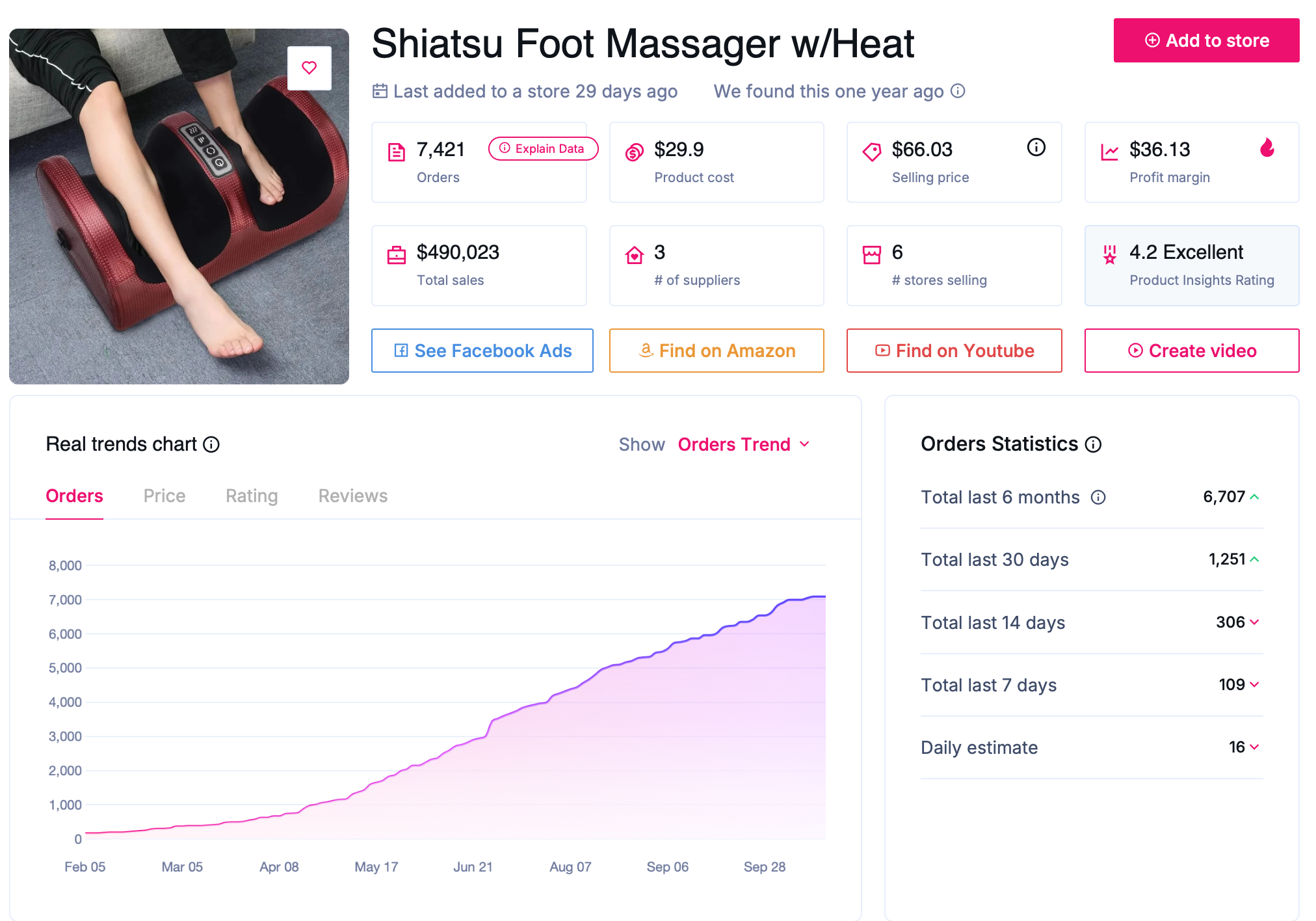
Here, we can see everything we need to make a decision—number of orders, total sales, product cost, and profit margin. It even has a handy graph that shows how the product’s sales have grown over time.
So, when choosing a niche, tools like Sell The Trend save you time and give you solid data to make smarter decisions. You can try it with a 14-day free trial and start exploring products right away.
What makes a good niche? When selecting your niche, think about:
- Demand: Is there consistent interest in this category? You want products people are searching for regularly.
- Competition: Can you stand out? Avoid overly saturated markets unless you can offer something unique.
- Profit margins: Look for products that allow you to mark up the price enough to cover costs and make a profit.
2. Find Reliable Free Suppliers
The second step to starting dropshipping? Finding suppliers you can count on. You don’t want to deal with angry customers because of slow shipping or bad products, right?
How do you find these suppliers?
Start by heading to platforms like AliExpress or CJDropshipping. They’re free, easy to use, and give you access to thousands of suppliers. Let’s say you’re selling pet products. Just search “pet accessories” and filter by top-rated suppliers. Focus on suppliers with good ratings (4 stars or more) and fast shipping times.
But how do you know they’re reliable?
Simple: Check customer reviews. If people complain about slow shipping or poor quality, move on. Also, message the supplier directly. Ask about shipping times and return policies. This tells you a lot about how responsive they are.
We always suggest ordering a sample product. It’s better to know what you’re selling upfront than get surprised later.
Here are some criteria for finding a reliable dropshipping supplier:
- Ratings: Stick to suppliers with 4 stars or higher. It’s like shopping on Amazon—you wouldn’t buy a 2-star toaster, right?
- Shipping speed: Check how long it takes for the supplier to ship products. If customers wait weeks, they’ll blame you, not the supplier.
- Product quality: Read reviews to make sure the products don’t break after one use. You want happy customers, not refund requests.
- Communication: Send them a message. If they respond quickly and clearly, that’s a good sign. If they leave you hanging, imagine how slow they’ll be when there’s an issue.
3. Build A Free Online Store
Ready to get your store up and running? You don’t need to spend a dime. There are plenty of platforms that let you build a free online store.
How do you start?
Big Cartel is a great option if you want something simple and free. You can list up to five products without paying anything. Sign up, pick a template that matches your brand, and start uploading your products. For example, if you’re selling eco-friendly gear, choose a clean, minimalist theme.
OR you can use Sell The Trend’s Sell Shop. It’s a free tool that helps you build a store without the fuss.
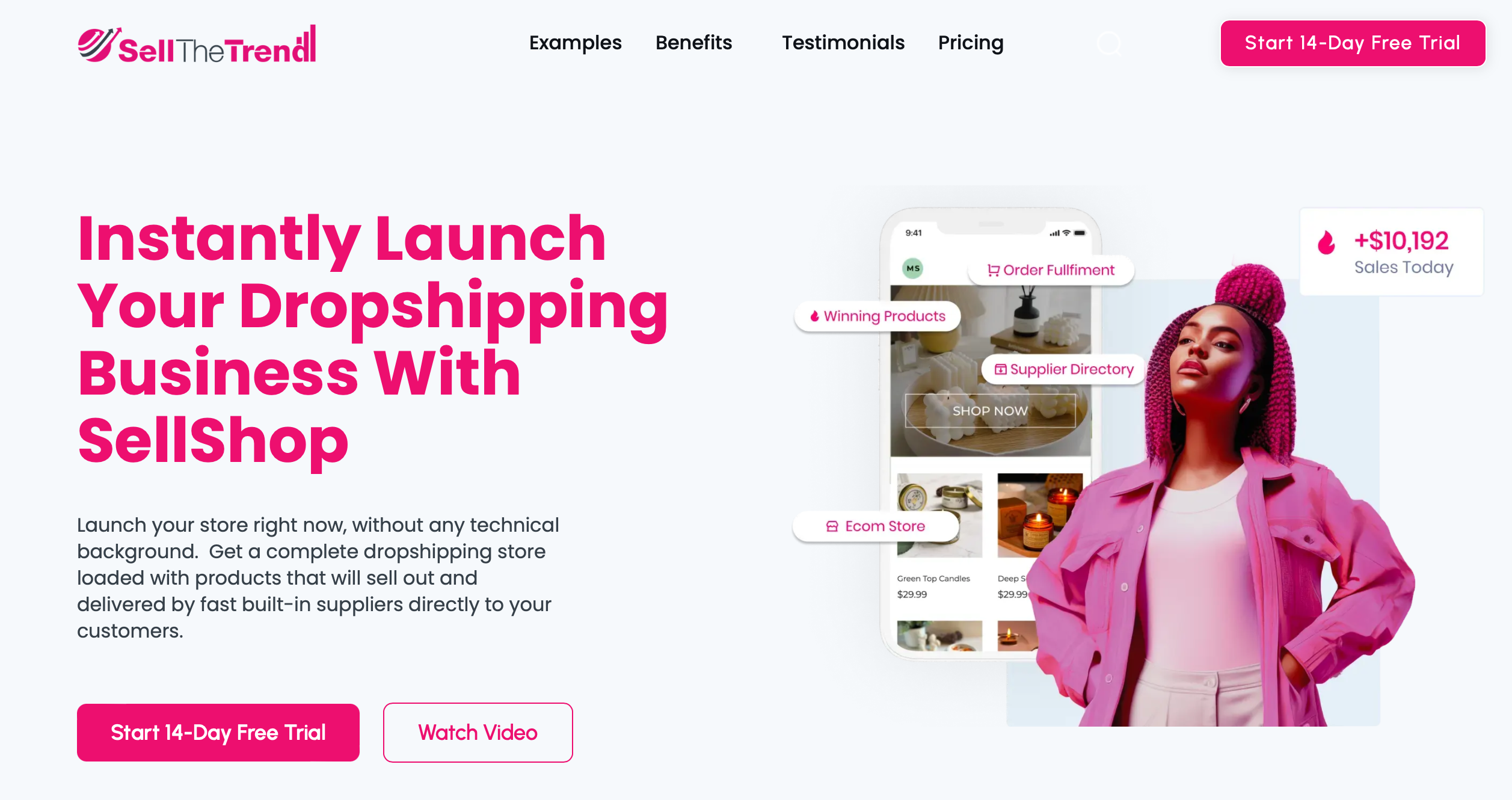
Here’s what you get:
- Simple templates: No design skills needed. Just pick one that fits your brand.
- Unlimited products: Unlike other free platforms, you can list as many items as you want.
- Product import: You can add products directly from the supplier database with a click.
- Mobile-friendly: Your store looks great on any device, no extra work required.
- Easy fulfillment: Orders can be fulfilled with one click—no manual work needed.
- Free security: Comes with SSL certification to keep your store safe and build trust.
Sell Shop makes it easy to get started, especially if you don’t want to deal with complicated setups.
What’s next?
Add high-quality images and clear product descriptions. Include the basics like shipping info, materials, and size options. Make sure the checkout process works smoothly—try it yourself to spot any issues before customers do.
We think using PayPal is a good idea. It’s free, secure, and familiar to most customers.
4. Leverage Free Marketing Strategies
You don’t need a fat wallet to market your store. There are tons of ways to get the word out for free.
Where should you start?
Social media is your best friend here. Create profiles on Instagram, Pinterest, or TikTok, depending on your audience. Post interesting content that shows your products in action.
Here’s how to do it:
Instagram:
- Create a business profile. Go to Settings > Account > Switch to Professional Account.
- Post high-quality images of your product in real-world settings. For example, if you’re selling handmade candles, post a picture of a candle burning in a cozy room.
- Use 5-10 relevant hashtags to increase reach. Hashtags like #CozyVibes or #HomeDecor help people find your post. To find the right hashtags, search Instagram and look at trending ones in your niche.
- Post consistently—aim for 3-4 posts per week. Use scheduling tools like Buffer or Later to plan ahead.
Pinterest:
- Create a business account and start by making boards for different product categories. For example, if you sell eco-friendly products, create a board called “Eco-Friendly Home Essentials.”
- Pin high-quality images of your products. Make sure each pin has a catchy description like, “Sustainable, reusable kitchen bags – perfect for reducing plastic waste.”
- Include a link in each pin that goes straight to your store. This makes it easy for people to click through and buy.
TikTok:
- Download the app and create a profile. Start by posting short videos that show your product being used. For example, if you sell skincare products, post a quick “morning routine” featuring your top items.
- Use trending songs or sounds to get more views. TikTok’s algorithm favors content that uses popular audio clips.
- Keep your videos fun and relatable—people love tutorials, life hacks, and how-tos. For instance, “How to get glowing skin in 3 easy steps” featuring your products.
- Add relevant hashtags like #SkincareTips or #SelfCareSunday to make sure your video reaches the right audience.
Another idea:
Write blog posts. Use a free platform like Medium or WordPress to create content that links back to your store.
We recommend connecting with micro-influencers in your niche. They often promote products in exchange for a sample or commission, which keeps your marketing costs at zero.
5. Optimize Your Store For SEO
Want more traffic without paying for ads? That’s where SEO (Search Engine Optimization) comes in.
How do you optimize your dropshipping store?
Start with keyword research. Use free tools like Google Keyword Planner or Ubersuggest to find out what people are searching for. We recommend focusing on keywords with high search volume and low competition. But what does that mean exactly?
High search volume means a lot of people are looking for that keyword each month. Generally, a keyword with 1,000 to 10,000 monthly searches is a good target. This range shows there’s demand without it being too broad or competitive.
Low competition means not too many websites are trying to rank for the same keyword. When using tools like Ubersuggest or Google Keyword Planner, look for keywords marked with low or medium competition. If you see a Keyword Difficulty (KD) score, aim for keywords with a KD of 30 or less. These are easier to rank for, especially when you’re starting out.
What do you do with those keywords?
Sprinkle them into your product titles, descriptions, and blog posts. But don’t overdo it. Google loves helpful content, not keyword stuffing. Also, make sure your store loads quickly and looks good on mobile. Most people shop from their phones, so your site needs to be fast and easy to navigate.
We can’t stress this enough: Don’t forget about image alt text. Adding keywords to your image descriptions can boost your ranking in Google image search!
6. Drive Traffic With Free Email Marketing
Email marketing is a great way to stay connected with your customers, and the best part? It’s free to start.
How do you get started?
First, sign up for a free email marketing platform like Mailchimp. They offer free plans that let you manage a small list of subscribers. Next, add a sign-up form to your site. Offer a freebie or discount to get people to subscribe. For example, “Sign up and get 15% off your first order” is a good incentive.
What should you send?
Start with a welcome email. Introduce your brand, showcase popular products, and throw in a discount code to encourage a sale. Then, follow up with a weekly or monthly newsletter featuring new products, sales, or blog posts.
We suggest keeping your emails short and sweet. Most people won’t read long emails—especially on their phones.
7. Get Free Product Samples for Reviews
Want to build trust with your customers? Start by getting reviews. And to do that, you need product samples. Luckily, many suppliers are happy to send samples for free.
How do you ask for free samples?
Once you find a supplier, send them a message explaining that you’re planning to sell their product in your store. Mention that you’d like to review the item before listing it. Many suppliers will be happy to send a sample if it leads to more sales.
What should you do with the samples?
Take high-quality photos and write an honest review. Share it on your website, social media, and in your emails. Better yet, create a video unboxing or demo to show how the product works.
We recommend offering your customers a discount in exchange for a review. It’s a win-win—more sales for you, more trust for them!
8. Use Free Online Marketplaces
Don’t have a website yet? No worries! You can start selling on free online marketplaces.
How do you use them?
Sign up for a free seller account on platforms like Facebook Marketplace or eBay. Create listings with clear photos and descriptions. Be sure to highlight the benefits of your product—like durability, eco-friendliness, or affordability.
Why should you start here?
These marketplaces already have millions of users. You don’t need to drive traffic—buyers are already looking for products like yours. Plus, you only pay a small fee once you make a sale, so there’s no upfront cost.
We suggest joining Facebook selling groups related to your niche. It’s a great way to get your products in front of more people.
9. Negotiate Free Shipping with Suppliers
Customers love free shipping. But that doesn’t mean you have to absorb the cost. Many suppliers are open to offering free shipping if you ask.
How do you negotiate free shipping?
Reach out to your supplier and explain that you want to offer free shipping to your customers. Ask if they can reduce or cover the shipping costs, especially if you plan to place regular or bulk orders. Suppliers often appreciate long-term partnerships and might be more flexible with shipping rates.
What if they don’t offer free shipping?
If they can’t provide free shipping for every order, ask if they can at least cover it for larger ones. You can offer free shipping to customers who spend over a certain amount, which can also boost your average order value.
We always recommend negotiating! It never hurts to ask, and it can save you a lot in the long run.
10. Join Dropshipping Communities for Free Resources
Looking for tips, tricks, or advice from experienced dropshippers? Join a dropshipping community! The best part? They’re free.
How do you find these communities?
Look for Facebook groups, Reddit threads, or forums focused on dropshipping. Groups like “Shopify Entrepreneurs” on Facebook or r/dropshipping on Reddit are full of active members. Join in the discussions, ask questions, and share your experiences.
Why join?
You can learn from others’ mistakes and successes. Plus, members often share valuable resources, like supplier recommendations, marketing tips, and free tools that can help you grow.
We think being active in these communities is key. You’ll get the most out of it by engaging, not just lurking.
How To Start Dropshipping With No Money: FAQs
Here are some common questions people ask when starting a dropshipping venture with little to no money.
1. Can I Start Dropshipping For Free?
Yes, you can start a successful dropshipping business without spending any money upfront.
Many platforms offer free trials, and you can find suppliers that don’t require fees to list their products. Marketing can also be done using free methods like social media, allowing you to build an audience without needing paid advertising.
2. Can We Start Dropshipping With $0?
It’s possible, but keep in mind that running a dropshipping venture with no money means you’ll need to rely heavily on organic traffic and free resources.
You won’t be able to use paid advertising at first, so your focus should be on providing excellent customer service and ensuring customer satisfaction to build customer loyalty. You can also do your own market research to find profitable niches without investing in expensive tools.
3. Can You Start Dropshipping With $500?
Absolutely. With $500, you can invest in things like dropshipping services that help automate your business, or you can use some of that budget for paid advertising to drive traffic faster. This gives you more flexibility to scale your dropshipping journey and test different marketing strategies.
4. Can I Start Dropshipping With $100?
Starting with $100 is possible, but it will be tight. You can still use free trials for tools like Shopify or marketing platforms and focus your budget on must-haves like a domain name or specific dropshipping services that help you manage orders. The key is to maximize your resources and stay focused on customer satisfaction.
Conclusion
Starting a dropshipping journey with no money or a small budget is definitely possible. You can rely on free trials, organic traffic, and market research to get your business off the ground.
As your business grows, focus on delivering excellent customer service to build customer loyalty. Whether you’re starting with $0 or $500, the most important thing is to keep improving your dropshipping venture and adapt as you go.
